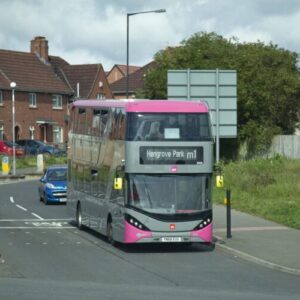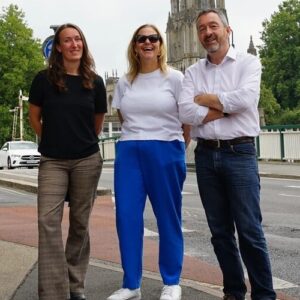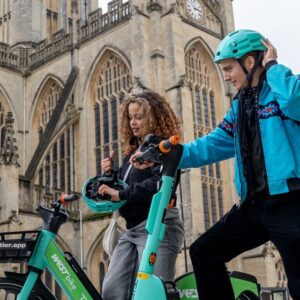
M1 metrobus route to be extended in 2026
Works to extend the popular m1 metrobus route and improve walking, wheeling and cycling infrastructure in the area are set...
Top line: Victim blaming in child pedestrian injuries is a strategy which serves to maintain the economic interests of the dominant groups in society at the expense and suffering of children, particularly those from low income families.
Whilst cardiovascular disease and cancer are the major causes of death in adults, in childhood, motor traffic inflicted injuries, particularly as pedestrians, are the leading cause of death. For every death approximately ten children are seriously injured. Many of these suffer long term disability. Individualism – ie the responsibility of individuals to take preventive action – constitutes the ideological base of preventive policies. Strategies for the prevention of child pedestrian injuries are, for example, almost entirely aimed at improving child pedestrian behaviour, despite robust evidence that this is likely to be ineffective.
Roberts and Coggan analysed the processes involved in the aftermath of the death of a 10 year old girl walking home from school.1 This included the police officer‟s report from attendance at the crash scene. At this stage the officer coded his form as “Pedestrian: crossing road heedless of traffic, unattended child”. A week later an engineer from the local highways department attends the site and notes the likely average speed of the motor traffic and the mean traffic flow per minute. From this Roberts and Coggan note that “there was a mean traffic flow at the injury site of 877 vehicles per hour, approximately 15 vehicles every minute. Thus the mean time available for crossing, assuming a steady flow, would have been only four seconds. It is quite likely therefore, that running was a necessary prerequisite for road crossing rather than an indication of impulsiveness”.
The Coroner‟s Inquest comes next. The stated aims of which are to determine the „facts‟ surrounding the death, primarily for the purpose of reliable record keeping for the State. In considering the case the coroner observed that because of the widespread provision of traffic education in schools the type of erratic traffic behaviour displayed, would be unusual for a 10-year-old. He observed that children are repeatedly told “don‟t jaywalk, but (name) may have been doing a little bit of jaywalking”. The verdict returned by the coroner stated: “‟I find that (name) died at (place) accidentally, sustained when she ran out into the path of an approaching vehicle without checking that the road was clear of traffic.”
In this case, a choice was made between the two main contenders for individual responsibility, the driver and child victim. Since the driver‟s claim of traveling at 40 kph (within the 50 kph speed limit) was accepted, no negligence was attributed to the driver. That responsibility was located with the victim. Although walking out into the road clearly did result in this child‟s death and might appropriately be considered a cause, it was nevertheless only one of a number of causes. „Other causes of pedestrian injury which could equally have been chosen for consideration would include poverty, high traffic volumes and high vehicle speeds.‟ However, a drawback of the multi-causal approach to causes is that it allows some causes to be singled out for attention above others. This is a choice motivated by ideology in which threats to road transport infrastructure must be resisted in order to protect vested interests which rest on economic expansion.
1 Roberts, I., Coggan, C. 1994 Blaming children for child pedestrian injuries, Social Science & Medicine,38(5):749-753.
110: Blaming Children for Child Pedestrian Injuries Download pdf PDF approximately 99.11 K
Works to extend the popular m1 metrobus route and improve walking, wheeling and cycling infrastructure in the area are set...

The West of England Mayoral Combined Authority will receive more than £11.7 million in government funding to help them deliver...

Millions of passengers in the region are set to benefit from faster, cheaper and more reliable buses after the Government...

Dott, the operator of the shared e-bike and e-scooter trial service in the West of England, is expanding its service...

At Bath’s world-famous Christmas Markets, which celebrate their 25th anniversary this year with more than 250 stalls, local leaders and the...